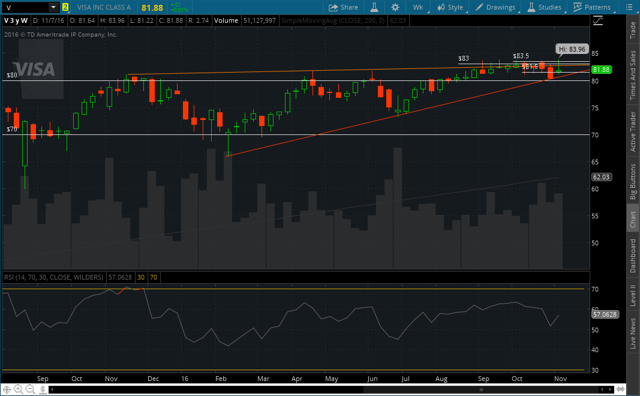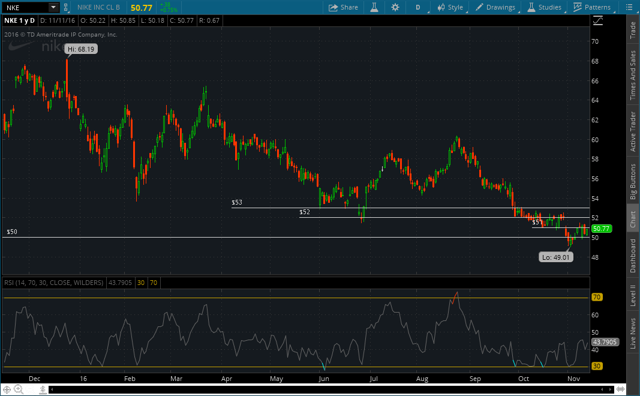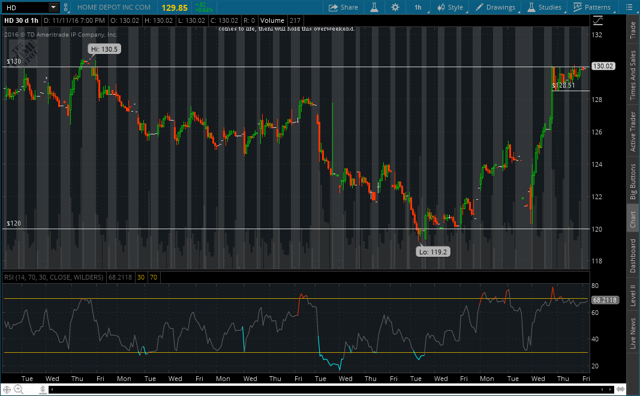Below you can find a text of a paper that I produced in 2009 on the topic of decoupling. I am posting it here, as I consider it to be valid today as it was then. When I wrote it, we were in the midst of a full blown recession and many things were unclear.
After
the first symptoms of recession of US financial markets, many investing firms
and funds have changed their focus to emerging markets of Europe and Asia,
specifically to China and India. One of the avid supporters of “decoupling
theory”, the president of Euro Pacific
Capital, Peter Chiff, has confessed in his video blog on August 24’ 2009: “If
you look at the big economies such China and India, they never even went into
recession, they slowed down a bit, but now they are expanding even more
strongly; they avoided recession. Some of the larger more advanced economies in
Europe and other parts of the world, dipped into recession but now they are
already out of the recession. It is the United States that is still in a
recession. And initially, based on 2008, everybody thought - oh, no! When US catch
a cold, the world gets pneumonia! Well, that did not happen. Everybody was
afraid that was going to happen in 2008. That’s why US dollar rose; that’s why
foreign stocks sold off more that US stocks. Everybody was waiting the world
will catch pneumonia; they did not. They caught cold just like us; they did not
even get as bad as we did. So what’s happening is global markets are
recovering, global economies are recovering, and I think what we are having is
“decoupling”, because I do not believe that US economy is recovering”.
Decoupling theory is postulated in this
context for assisting the firms to reap from these emerging markets, but the
validity of this theory is arguable and has been a topic for discussions in
numerous TV-shows, conferences and live events.
What is
“decoupling”? Decoupling theory, as the name suggests, decouple emerging world
markets from developed countries’ markets (particularly US markets). The
followers of this theory believe that “because of the strong GDP growth of many
developing countries, especially of China and India, their markets will remain
bullish even at the time US and other developed markets are in a recession.”
The theory was pretty logical and right till the end of last year (2008), but
things have changed considerably during this year as well. Most of the Asian
markets are now in a big recession after the crash of Dow Jones, in March of
2009. On the other hand, Indian, Chinese and Hong Kong markets fell
considerably in the last year or so.
The major
drawback of “decoupling” theory is that, it has not considered the multiple
economic relationships and globalization trends. Although the trades among
Asian countries has grown tremendously, the major trading partner for all of major
Asian countries is still United States and any recession in its economy will
lead to recession in all of these countries. Simple explanation for that would
be the degree of interconnectedness among these same countries. One of the
major contributors for the growth of any country’s GDP is a trade between one
country and another. So, trade has grown considerably in the last couple of
decades between so-called developing nations and developed nations, though the
effect may vary from country to country, according to the diversification of
economies of participating countries.
The “decoupling
theory” is widely accepted as a valid thesis in many business and academic
circles. It is also considered to be an explanation for asset allocation
practices in numerous investment management companies. No one knows exact
amount of money that has been lost by investors who built their models on
unproven strategies that work only in theory but fails in practice, such as
‘decoupling’, but the amount is known to be significant. As trillions of
dollars were wiped off the value of global stocks last year, meanwhile
"decoupling" became the latest big idea to shrink dramatically when
tested in the real world with real consequences.
Decoupling theory claims that European and
Asian economies are not correlated or became less correlated, especially
emerging countries’ economies have broadened and deepened to the point that
they no longer depend on the United States economy for growth, leaving them
insulated from severe catastrophic events, such as fully fledged recession or
even a depression. Faith in the concept has generated strong outperformance for
stocks outside the United States - until last year. As opinion began to
solidify after the start of the year that a recession, or something close to
it, was likely in the United States, stock prices then, a little later, the
values for securities accelerated their declines on major stock exchanges, with
the selling intensifying in the 3rd quarter of 2008. It was a clear sign of
panic among investors. Contrary to what the decoupling theory enthusiasts would
have expected, the losses were greater outside the United States, with the worst
experienced in emerging markets and developed economies like Germany, Japan and
France. Exports make up especially large portions of economic activity in those
places, but that was not supposed to matter anymore in a decoupled world
because domestic activity was thought to be so robust. Decoupling was all the
rage early last year when international financial markets all but ignored the
increasing turmoil in the U.S. Main news networks publicly ignored the severity
of coming crisis. Bear Sterns sale to J.P. Morgan Chase though did make front
pages of major newspapers. Previously, collapse of California based IndyMac
Bancorp Inc. also failed to trigger an alarm for the economy. It was just
assumed that these accidents do not jeopardize the economic power of US and
investors still had optimistic projections about the economy. Investment
advisers pointed out, however, that the segments of the U.S. economy that were
showing wear and tear then were those to which the rest of the world would
never be heavily exposed.
That is no
longer true, they say, and markets are responding accordingly. "Decoupling
is yesterday's story," Stuart Schweitzer, a global strategist at JP
Morgan, said. "Last year, when the U.S. slowdown was driven almost
entirely by housing, it made sense that the rest of the world kept right on
going. Housing is a domestic story, plain and simple.” The nature of the
slowdown has changed in two key respects. The credit crunch or/and shortage of
credits that began in midsummer of 2008 is not just a U.S. phenomenon; the rise
in risk aversion is global and will have an impact on credit terms and
availability everywhere. And we finally saw evidence that the U.S. job market
was losing steam and consumer spending is slowing.
True believers
in decoupling have ignored another theory that appears to be logically
inconsistent with it, but has been popular for far longer and, most important,
which has been shown to work in real life. Remember “globalization”? "If
anything, global interdependence of economies is rising, not falling, with even
more coupled economic and financial infrastructure" said Jeff Applegate,
chief investment officer of Citi Global Wealth Management, in his Wall Street
Journal interview. The notion that the U.S. can go into recession with no
negative knock-on effect in the rest of the world doesn't hold up anymore. On
the other hand, Andrew Foster, head of equity research for Matthews
International Capital, a specialist in Asian markets, contends in his blog,
that “it is possible for globalization and decoupling to coexist. In fact, one
gave rise to the other”, he said. It was only through economic liberalization which
comes through globalization that the juggernaut economies of Asia were able to
grow as fast as they have, allowing for the development of conspicuously
consuming middle classes. The irony is that these economies are more coupled
and connected with the rest of the world than they ever were in the past,
that's why they're so strong, and that has allowed them to become more independent.
The new Asian consumers may not be able to compensate for all of the exports
that would be lost during an American recession, but some of the companies that
served their needs might still do all right for themselves. The true decoupling
may be not so much between the United States and the rest of the world as
between segments of the global economy that cater to the burgeoning new rich
class in emerging economies on one hand and most other commercial sectors on
the other.
With the United
States apparently tipping over into recession, many investment gurus are
looking to fill their Asia portfolios with the first type of businesses, as
long as they have not been bid up to unreasonable levels already. A couple of
pockets of opportunity that they find are Chinese insurance companies and
Indian health care providers. Many American corporate behemoths such as Pfizer,
goes for hunting as well. In October 29th, Pfizer announced its plan to go
ahead and acquire Indian “Wockhardt Pharmaceutical Company”, which was met with
optimism in markets of both countries. The case here might be to invest in
companies that don't derive their fortunes from products, services and
especially commodities dominated by the global business cycle. Valuation is
also critical for many investment professionals such as Michael Avery, chief
investment officer of Waddell & Reed and a professed believer in decoupling
- up to a point. He noted that the concept began to pop into the heads of
professional investors, including his, during the last U.S. recession, in
2001-2002, although it had not yet achieved buzzword status.
Many investors started thinking and
strategizing about where the world was going to head in a post-9/11
environment. The U.S. economy had slowed dramatically in 2001, and there were
places in the world like China and India that continued to grow at mid to high
single digits. That set in motion the thinking that the U.S. might not be the
leading economic force going forward. While some investors accept the basic
idea of economic decoupling, they are not fanatical about it as an investment
theme, at least not now. The emerging world will grow faster than the United
States, but they doubt that sufficient growth can be achieved to justify the
valuations being put on companies in those markets by the new wave of
decoupling adherents. For instance, average P/E ratio for a Chinese blue-chip
company is now in ranges of 25-35, which gives signals of coming huge asset bubble
and price bubble in public markets.
The big difference
of 2002 events is that not many people placed bets on that outcome, so there
wasn't much risk. Now if we go anywhere, and talk about China and India and the
emerging middle class, people will agree that it's a huge difference from five
years ago. One can still find value in some of the domestically oriented
sectors in Asia, as well as in Middle Eastern markets that continue to benefit
from one key export, crude oil. We can safely conclude that the growth of
middle-class spending is promoting a healthy expansion of trade within the
emerging world. Some people believe that China is rapidly moving from being
dependent on exports to the U.S. to enjoying a virtuous circle of rapidly
rising incomes for Chinese consumers and very strong momentum behind internally
driven growth. The proof for this hypothesis is that Chinese government spent
around $584 billion, as fiscal stimulus for further infrastructure developments
and facilitating Chinese middle class actively participate in economic growth.
There is momentum in Chinese stock markets,
too, but in a different direction. Perhaps the biggest beneficiary of
decoupling is giving back much of its enormous gains of the last few years as
investors break faith with the concept. Economic trouble has spread far beyond
the United States to major countries in Europe and Asia, threatening businesses
around the world with the loss of the international sales and investment that
have become increasingly vital to their sustenance. Only a few months ago, some
economists still offered hope that robust expansion could continue in much of
the world even as the United States slowed. Foreign investment was expected to
keep replenishing American banks still bleeding from their disastrous bets on
real estate and to provide money for companies looking to expand. Foreign
demand for American goods and services was supposed to continue compensating
for waning demand in the United States. One thing is for sure, that US economy
is dependent on other countries. The macro policies being implemented by
foreign governments make it more complicated to predict the possible future for
decoupling theory.
Investors are still in search for models
which will give them the returns they desire with risk appropriation they can
afford, but now we can state with less certainty that emerging markets are the
place to go.
What is the
future course for economies of developed countries, emerging countries? What is
the future trend for the financial markets?
These questions
are considered to be of utmost importance for anyone who has a little amount of
interest in markets. Yet no sensible answer can be given under circumstances we
are in now. Simply put, it is not knowable and not possible to predict. Future
has never been certain, but one thing is clear that many more challenging times,
busts and crises are ahead of us. However, the issue investors should be
concerned about is the time frame when ‘confidence’ will return to markets. On
the other hand, emerging countries should look for ways to bolster economies in
the short term and work on making it sustainable on the longer term basis.
With global
stock markets plunging on fears of a US recession and the Federal Reserve
cutting rates in the wake of their collapse, the theory that much of the world
economy has 'decoupled' from the United States looks increasingly dubious.
Decoupling was
the latest of the periodic 'it's different this time' theories to sweep through
the world's financial markets. The idea was that there is enough economic
growth in and among emerging markets -- and perhaps even Europe -- that a US
recession would not automatically drag down the rest of the global economy.
Some experts expressed a bit extreme views
such as, ‘the decoupling theory is lying in ruins’; others confided that they
‘never thought it was much of a theory anyway,’. Though the fact is that US is
a quarter of the world (economy) and if its imports slow down, the rest of the
world will slow down too. Here we see clear cause and effect relationship
between US economy and its trade partner’s economies.
It certainly ends the idea of 'pure
decoupling'. The old saying was that if the US economy caught a cold, the rest
of the world got the flu. It's clear that if the US gets the cold, there's no
complete decoupling, the rest of the world's economies aren't immune from
whatever ails the US -- or vice versa.
Economists at Global Insight, for
example, cut their 2008 global growth forecast to 3.4 pct for 2008, given 50/50
odds of a US recession. Markets reacted with 2.1% drop in one day, after the
release of this prediction. Here we see markets’ sentiment towards, risk
avoidance.
There is a distinction to be made, however,
between the world's actual economies and the world's financial markets. The
financial linkages are much stronger than before. The financials are much more
linked than the actual economy, in the sense that they are faster to process
information.
The unpredictable element of coupling in all of these
forecasts is global investor psychology. It's being driven by sentiment and
emotions than anything. In a state of panic and uncertainty, it's hard for the
markets to decouple.
The reality is
clearly more complicated. Notable emerging markets will undoubtedly come out of
the financial crisis with an ability to sustain significantly higher economic
growth than its industrial counterparts. This ability reflects healthier
financial conditions, greater policy flexibility through surpluses, and more
dynamic sources of growth. However, it is clearly premature to consider
emerging markets as independent sources of growth. The base effects are still
low and a large portion of growth seen this year comes out of transitory and
ultimately unsustainable means (massive stimulus in China, for example). For
investors, reliable indicators that will signal a shift toward sustainable,
independent growth in emerging markets will be domestic consumption levels and
the extent to which policy recognizes and encourages the consumer rather than
the producer. Specific policy measures would be a stronger social safety net
(traditionally lacking in countries like China) and greater exchange rate
flexibility.
Bibliography
1. Max Wolff. “Debunking the Decoupling Theory”, Seeking Alpha (January 27’ 2008)
2. Conrad De Aenlle. “Decoupling vs. Reality”, The New York Times (February 7’ 2008)
3. Daniel Pipitone. “Decoupling Theory of Emerging
Markets”, NobleTrading (January 22’2008)
4. Heather Bell. “Is Decoupling Done?”, Yahoo Finance (January 8’ 2009)
5. Gavin Jones. “Decoupling: What really happens
when US sneezes?”, Reuters (Feb.
5’2008)
6. Pedro – Pablo Kuczynski. “Are the Emerging
markets Decoupling from United States?”, International
Economy (2005)







